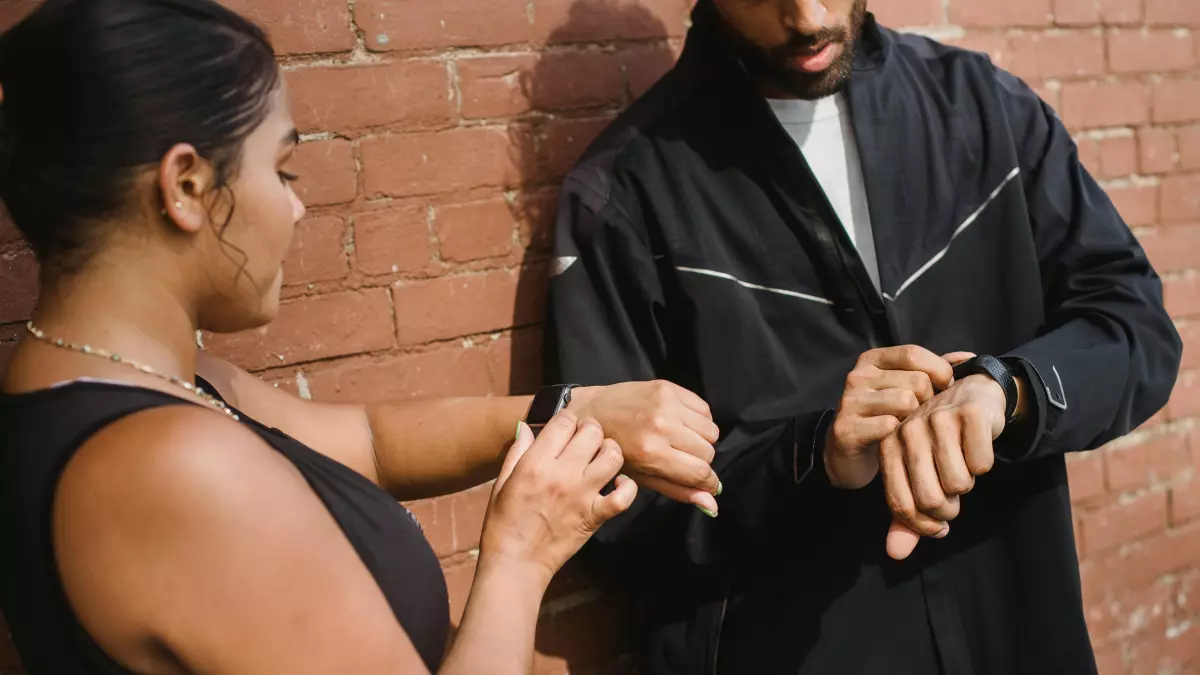Power Play
Imagine your wearable device as a marathon runner. It’s got the stamina, the sensors, and the smarts to keep going, but only if its “fuel” – the battery – doesn’t run out mid-race. The balance between battery life, sensors, and software is like a delicate dance, where one misstep can throw the whole performance off.

By Laura Mendes
Have you ever wondered why your smartwatch sometimes feels like it’s on life support, constantly needing a recharge? Or why your fitness tracker suddenly stops tracking your steps halfway through the day? The answer often lies in the intricate relationship between battery life, sensors, and software integration. But what exactly is going on under the hood of your favorite wearable, and how does battery life impact its overall performance?
Let’s break it down. Wearables are packed with sensors that monitor everything from your heart rate to your sleep patterns. These sensors are constantly working, gathering data, and sending it to the software that processes and displays it in a way that’s useful to you. But here’s the catch: all of this requires power. And that’s where the battery comes in.
The Battery-Sensor Tug of War
Think of the battery as the lifeblood of your wearable. It powers the sensors, the software, and everything in between. But the more sensors your device has, the more power it needs to keep them running. This creates a tug of war between the sensors and the battery, where the device has to balance power consumption with functionality.
For example, a fitness tracker with a heart rate monitor, GPS, and sleep tracker will drain its battery faster than a basic step counter. The more complex the sensors, the more power they require. And while manufacturers are constantly working to improve battery efficiency, there’s only so much they can do with the current technology. This is why many wearables have limited battery life, especially when all the sensors are running at full capacity.
Software: The Power Broker
If the battery is the lifeblood and the sensors are the muscles, then the software is the brain of your wearable. It’s responsible for processing the data collected by the sensors and turning it into something useful, like a graph of your heart rate or a summary of your sleep quality. But here’s the thing: software also consumes power.
Every time your wearable processes data, updates its display, or syncs with your smartphone, it’s using battery power. And just like with sensors, the more complex the software, the more power it requires. This is why some wearables have “power-saving” modes that limit the functionality of the device to extend battery life. In these modes, the software might only process data from the most essential sensors, or it might reduce the frequency of updates to the display.
Optimizing Battery Life: A Balancing Act
So, how do manufacturers strike a balance between battery life, sensors, and software? It’s a tricky equation, but there are a few strategies they use to optimize battery performance without sacrificing functionality.
- Efficient Sensors: One way to reduce power consumption is by using more efficient sensors. For example, some wearables use optical sensors that consume less power than traditional electrical sensors. Others use accelerometers that only activate when they detect movement, reducing the amount of time they’re drawing power.
- Smart Software: Another strategy is to optimize the software to use less power. This might involve reducing the frequency of data processing, limiting the number of background processes, or using algorithms that can process data more efficiently. Some wearables even use AI to predict when you’re most likely to need certain features, like heart rate monitoring, and only activate those sensors when necessary.
- Battery-Saving Modes: Many wearables also come with battery-saving modes that limit the functionality of the device to extend battery life. In these modes, the device might disable non-essential sensors, reduce the brightness of the display, or limit the frequency of data syncing.
The Future of Wearable Batteries
As wearable technology continues to evolve, so too will the batteries that power them. Researchers are exploring new battery technologies, like solid-state batteries and flexible batteries, that could provide longer battery life without increasing the size or weight of the device. There’s also the possibility of using alternative power sources, like solar energy or kinetic energy, to supplement the battery and extend its life.
But until these technologies become mainstream, wearables will continue to rely on the delicate balance between battery life, sensors, and software. And while manufacturers are making strides in improving battery efficiency, there’s still a long way to go before we see wearables with truly “all-day” battery life.
So, What’s the Solution?
At the end of the day, the key to optimizing battery life in wearables is finding the right balance between power consumption and functionality. Manufacturers are constantly working to improve battery efficiency, but there’s only so much they can do with the current technology. In the meantime, users can extend the battery life of their wearables by using power-saving modes, limiting the use of non-essential sensors, and keeping their software up to date.
So, the next time your smartwatch dies halfway through the day, don’t blame the battery – it’s just trying to keep up with all the sensors and software that make your wearable so smart in the first place.




